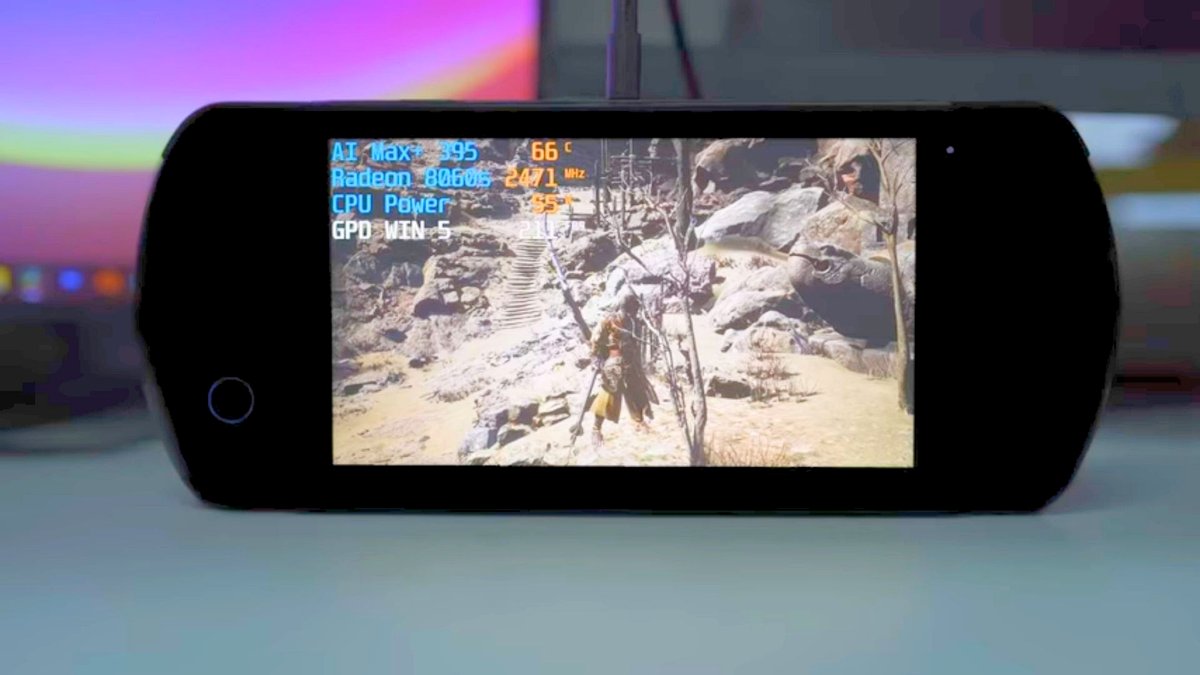GPD's radical departure from conventional handheld design philosophy has crystallized with confirmation of the Win 5's October 2025 release window, alongside a rumored $1,500 launch price that positions it firmly in ultra-premium territory. The device's most controversial feature – a complete absence of internal battery – transforms the fundamental concept of portable gaming.
Engineering Compromises Define New Category
The Win 5's external battery requirement stems directly from the power demands of AMD's Strix Halo architecture. With the Ryzen AI Max+ 395 processor consuming upward of 56 watts during gameplay, traditional battery integration proved impractical. The solution – an 80Wh detachable battery pack – adds 350 grams to the base unit's 550-gram weight, bringing total mass to 900 grams when configured for portable use.
This design choice fundamentally alters the device's value proposition. Unlike competitors that balance performance with portability, GPD has prioritized raw computational power at the expense of convenience. The external battery connects through dual braces and powers the device via a bottom-mounted port, creating a significantly thicker profile than the base unit suggests.
Performance Metrics Justify Premium Positioning
Technical specifications reveal why GPD pursued this unconventional approach. The 7-inch, 1080p display operates at 120Hz with variable refresh rate support, while the Strix Halo APU delivers graphics performance triple that of current-generation handhelds. Early testing demonstrates 80 frames per second in Black Myth: Wukong, though at power consumption levels that would drain conventional integrated batteries within minutes.
The thermal management system maintains CPU and GPU temperatures in the low 70-degree Celsius range during sustained gaming sessions. However, this comes at the cost of requiring either the external battery pack positioned directly over cooling vents or connection to a 180-watt power adapter – effectively tethering users to power sources.
Market Implications Signal Category Bifurcation
The $1,500 price point, combined with the external battery requirement, positions the Win 5 as a niche product for enthusiasts prioritizing performance over practicality. This represents a significant departure from the accessibility-focused approach that validated the handheld gaming PC category through devices like the Steam Deck.
The Win 5's October debut at ChinaJoy 2025 will test market appetite for ultra-premium handhelds that sacrifice fundamental portability features. Competitor responses, including Ayaneo's own Strix Halo device with integrated battery, suggest alternative engineering approaches remain viable for the architecture.
This polarization between accessible mainstream devices and extreme enthusiast products may define the handheld gaming PC market's evolution. The Win 5 serves as a test case for whether consumers will accept fundamental compromises in exchange for desktop-class performance in a semi-portable form factor.
Sources
- NotebookCheck: "GPD Win 5 release window and tech specs revealed with $1,500 launch price rumoured by Alex Alderson"
- PC Gamer: "We just got our first proper look at GPD's battery-optional Strix Halo handheld gaming PC and I'm still unconvinced by James Bentley"
- Tom's Hardware: "AMD Strix Halo gaming handheld lacks an internal battery — GPD Win 5 requires an external battery or be plugged into the wall by Mark Tyson"
- Liliputing: "GPD Win 5 handheld gaming PC specs & performance preview: Strix Halo processor, 7 inch display, and no keyboard by Brad Linder"
Note: All sources have been verified for accuracy and editorial standards compliance.
